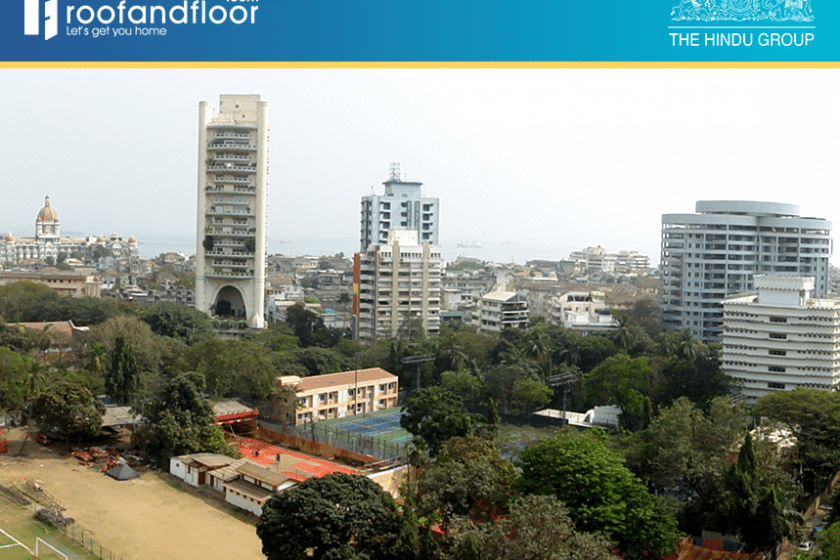Mumbai is a veritable maze of neighbourhoods that holds more diversity in people and businesses than probably the rest of India. It’s called the Commercial Capital of India, the hub of all its economic activity, and the cog of the country’s growth. But like any other city, it also has a traditionally established Central Business District (CBD), a financial district, and upscale residential neighbourhoods. How did Mumbai grow to where it is?
Mumbai’s commercial beginnings
Mumbai’s commercial evolution has its beginnings in Ballard Estate where business flourished as far back as the 18th century. European style buildings still line the area, which is home to the Mumbai Port Trust, and the headquarters and offices of many shipping companies. But other businesses slowly began shifting to the Fort area during the 19th century, which today continues to be the heart of the financial district where the Bombay Stock Exchange, Reserve Bank of India, and the headquarters of the Tata Group are based.
By the 1970s, Nariman Point became the new business district that wooed small businesses and commercial enterprises. The area is home to the headquarters of some of the most prestigious establishments like Air India, and before the financial debacle of 2008, Nariman Point was the seventh most expensive commercial real estate space in the world.
Infrastructure is the key to the making of a thriving business district. Nariman Point has the advantage of being a stone’s throw away from important commuter routes like the Western Line, Central Line, and the Harbour Line as well as major expressways. But over time, a lack of maintenance and increase in population led to parking space issues and buildings in disrepair, amongst others, prompting businesses to move away from Nariman Point to more post and well-developed areas in Mumbai.
Expansion of the CBD
Post 2010, with no scope for expanding its narrow roads, Nariman Point witnessed an exodus of businesses to other parts of the CBD like Bandra-Kurla Complex (BKC), Worli, Prabhadevi, and Lower Parel.
For a while, BKC, in particular, flourished because of its distinct advantage of being located between the international airport and Nariman Point making it more accessible.
Lower Parel was essentially an industrial area filled with mills, which were refurbished and converted into retail and commercial spaces. All these emerging areas that became an extension of the CBD had plenty of features that attracted businesses to these areas. Modern buildings, proximity to residential areas, better maintenance, broad roads, uninterrupted power supply, accessibility, and plenty of parking were all details that attracted commercial establishments and corporates.
Emergence of the SBD and PBD
In the last few years, however, Mumbai saw the emergence of a Secondary Business District (SBD). This comprises of:
- Vikhroli
- Santacruz Electronics Export Processing Zone (SEEPZ)
- Andheri-Kurla
- Kanjurmarg
- Powai
Each has its own special business profile, making it a micro-market on its own.
CBDs are largely losing out to SBDs due to a lack of project and precinct level infrastructure. Andheri-Kurla, for instance, is in high demand among manufacturing and logistics companies due to its propinquity to the airport while SEEPZ and Powai have seen a crush of IT/ITeS firms coming up at a rapid pace because of accessibility to key railway routes.
An Economic Times report predicts a high development rate up to 2020 as corporations aim to attract employees with a better working environment.
Although traditionally established businesses continue to maintain their offices, vacant spaces in Nariman Point have risen from 2% in 2007 to 9% in 2016.
BKC continues to be popular, but it’s these new areas that are set to flourish with the coming of the Metro-Rail between Versova and Ghatkopar.
Peripheral Business Districts (PBD) emerging as important business centres are:
- Thane
- Vashi
- Ghansoli
- Airoli
This is because of the presence of well-maintained office spaces, organizations like City & Industrial Development Corporation (CIDCO) in Navi Mumbai that promote commercial growth by offering incentives and subsidies, well-connected and broad roads, and relatively affordable rentals (cheaper by as much as 45% to 60% compared to CBDs, according to JLL data) for both residential and retail.
JLL also points out that PBD has seen the biggest growth in office space in the past few years with the development of social infrastructure and transport making it convenient for time-pressed commuters.
Mumbai might be a maze, but it continues to have pockets of space that are alluring to both businesses and residents making it the Eternal City of India.


